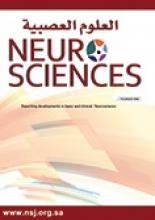Article Figures & Data
Tables
Authors/Publication Year Country Study design Population Sample size Diagnostic criteria Main findings Marshall and Meltzoff,74 2014 USA Review N/A N/A N/A Early development of the MNS suggests it functions to facilitate social learning, social reciprocity, and to allow infants to communicate with and respond to their environment Cross and Iacoboni,76 2014 USA Cross-sectional 20 females and 17 males, after exclusion a total of 32 participants were included 37 N/A When an action has not been previously mapped, automatic response and motor resonance are suppressed Gallese et al,78 1996 Italy Cross-sectional Monkey 2 N/A 532 (17%) neurons in F5 of the macaque monkey fulfilled the criterion to be referred to as mirror neuron Murata et al,80 1997 Japan Cross-sectional Monkey 1 N/A Canonical neurons exist, these are the neurons that respond just by observing a graspable object without performing any action Masconi et al,81 2015 USA Review N/A N/A N/A Size and cerebellar circuitry is also affected in autism spectrum disorder Bailey et al,82 1998 United Kingdom Cross-sectional 6 ASD brains 6 ADI Fewer cerebellar Purkinje cells are seen in ASD patients compared to controls Whitney et al,86 2009 USA Cross-sectional 6 autistic and 4 controls 10 N/A Fewer cerebellar Purkinje cells are seen in ASD patients compared to controls Wegiel et al,87 2014 USA Cross-sectional 21 subject brains 18 controls (total 28 were selected after inclusion exclusion criteria) 39 Postmortem application of the ADI-R Fewer cerebellar Purkinje cells are seen in ASD patients compared to controls Von Hofsten and Rosander,91 2012 Sweden Review N/A N/A N/A Mirror neurons possibly exist in cerebellum Pohl et al,100 2013 Germany Cross-sectional 32 (27 finally selected) 32 N/A During imitation, higher activity in right hemisphere in the happy compared to the non-emotional condition in the right anterior insula and the right amygdala, plus pre-supplementary motor area, middle temporal gyrus and the inferior frontal gyrus was observed Van der Gaag et al,102 2007 The Netherlands Cross-sectional 17 healthy young adults(9 F, 8 M) 17 N/A but Edinburgh handedness Questionnaire as selection criteria Amygdala was activated during observation of emotional and non-emotional facial expressions Sussman et al,108 2015 Canada Cross-sectional 194 autistic participants and 280 Developing control participants 378 DSM-IV Increase in size of the brain lobes of autistic indivdiuals. Solso et al,110 2015 USA Cross-sectional 61 ASD patients 33 TD (typically developing) 94 Autism Diagnostic Observation Schedule. Vineland-II Adaptive Behavior Scales, Second Edition. Mullen Scales of Early Learning Increase size of the frontal lobe in ASD patients Sato et al,119 2014 Japan Cross-Sectional 29 ASD 12 Asperger 17 Pervasive developmental disorder not otherwise specified (PDD-NOS) 58 DSM-IV-TR Age-dependent gray matter differences in prefrontal cortex, primary sensorimotor cortex, and temporoparietal junction Doyle-Thomas et al,120 2014 Canada& USA Cross-Sectional 20 ASD patients 16 Controls 36 DSM-IV Autistic patients have elevated glutamate/creatine in the putamen Damiano et al,121 2015 USA Cross-Sectional 26 ASD children 22 Controls 48 ADOS Right caudate nucleus activation during non-social negative reinforcement was linked with individual differences in social motivation Wolff et al,122 2013 USA Cross-sectional 30 Fragile X Boys 16 Idiopathic Autism 46 DNA testing using Southern blotting for Fragile X. ADOS-G for autism The caudate nucleus plays a role in the early pathogenesis of self-injurious behavior associated with both idiopathic autism and the caudate may be differentially linked with compulsive behavior Marshall et al,123 2011 USA Review N/A N/A N/A mu rhythms that desynchronise in order to activate the mirror neuron system Cannon et al,126 2014 USA Cross-Sectional Total=33 8 Males 25 Females -11 Females performers. -10 (4 M, 6 F) were observers. -12 (4 M, 8 F) Novices – were unfamiliar with the procedure and research 33 8 Males 25 Females. N/A Participants performing an action show the greatest mu rhythm desynchronization in the 8-13 Hz band, in the right hemisphere as compared to observers and novices Simpson et al,73 2014 Italy Review N/A N/A N/A - not applicable, ADI- Autism Diagnostic Interview, DSM-IV - Diagnostic & Statistical Manual IV, ASD - Autism spectrum disorder, TD - Toddlers, MNS - mirror neuron system, ADI-R - Autism Diagnostic Interview-Revised, ADL - Autism Diagnostic Interview, ADOS-G - Autism Diagnostic Observations Schedule-Generic, ADOS - Autism Diagnostic Observation Schedule, DSM-IV-TR - Diagnostic & Statistical Manual IV Text Revision






